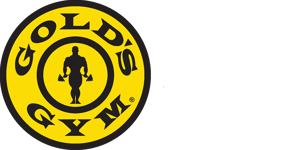How to Train for Hypertrophy: Your guide to building serious muscle.
If you’re looking to build muscle mass effectively, hypertrophy training is likely already a part of your routine—or something you’re considering incorporating. This guide breaks down how to optimize your hypertrophy-focused workouts for maximum results. We’ll cover key principles, practical programming advice, and what to expect in terms of results, benefits, and considerations.
What is hypertrophy training?
Hypertrophy training is a structured approach to resistance training aimed at increasing muscle size by stimulating muscle fiber growth. It relies on progressive overload, strategic repetition ranges, and sufficient recovery to maximize muscle development.
When you lift weights, your muscles experience mechanical tension, micro-tears, and metabolic stress. During recovery, these fibers repair and grow back thicker and stronger, leading to increased muscle mass. Optimizing hypertrophy requires careful planning—progressive increases to intensity or load, balanced with rest periods tailored to your abilities and fitness goals.
Pros and cons of hypertrophy training
Pros:
- Encourages muscle growth, making it ideal for bodybuilders and athletes wanting to boost strength and mass quickly.
- Enhances overall strength and physical appearance.
- Helps counteract age-related muscle loss, improving functional fitness and quality of life.
Cons:
- Muscle growth potential varies due to genetics, age, and dietary habits.
- Requires additional commitment to proper nutrition (especially protein intake), and consistent recovery periods.
Despite these challenges, hypertrophy training can be a sustainable and effective approach for building and maintaining muscle mass.

How does hypertrophy work?
Muscle growth primary happens through two processes:
- Myofibrillar hypertrophy: Increase in fiber density, leading to greater strength and endurance.
- Sarcoplasmic hypertrophy: Increased glycogen storage within muscle cells, leading to fuller, more volumized muscles.
These are driven through 3 key mechanisms:
- Mechanical tension: Progressive overload creates sustained stress on muscles, triggering adaptation.
- Muscle damage: Resistance training causes muscle tear, which the body repairs, leading to increased muscle size.
- Metabolic stress: High-rep training with moderate loads and short rest periods produce a buildup of metabolites, stimulating hypertrophy.
Optimal hypertrophy training programs balance these factors by incorporating compound movements, moderate weights, and structured recovery.
How to train for hypertrophy
Hypertrophy training programs can benefit anyone looking to build muscle, whether for physique development, strength enhancement, or maintaining muscle mass with age. The core principles remain the same, but can be tailored based on individual experience levels and goals.
- Progressive overload: Gradually increasing weight, reps, or intensity over time to continually challenge muscle fibers.
- Optimal rep ranges: Aiming for 6–12 reps per set at moderate intensity (with weights 67–85% of your 1RM) to balance mechanical tension and metabolic stress.
- Training volume and frequency: Understanding how many sets and reps you need for hypertrophy is key to striking a good balance between the two. Muscle groups generally respond well to 3-6 sets per exercise and at least two training sessions a week.
- Recovery and nutrition: Prioritizing protein intake (1.7–2g/kg of body weight daily), hydration, and sleep to support muscle repair.
For those focused on maximizing gains, compound movements like squats, deadlifts, and presses should form the foundation of training, complemented by targeted isolation exercises.

3 Practical tips to optimize your hypertrophy training
- Adjust intensity and volume: Work within the 6–12 rep range, ensuring weights challenge your muscles without compromising form. Gradually increase volume over time. Check out this beginner workout progression for some ideas if you’re just getting started.
- Maximize recovery: Nutrition plays a key role—spread protein intake throughout the day, stay hydrated, and prioritize sleep to support muscle repair. Read more about a few, green muscle-building veggies that can maximize your energy, reduce recovery time and improve your body composition here.
- Incorporate variety: Use a mix of compound and isolation exercises to target different muscle groups effectively and prevent stagnation. Kick your workout up a notch with this intermediate workout progression.
Why Gold’s Gym SoCal is your hypertrophy hub
If you’re serious about hypertrophy training, having access to the right equipment and guidance is crucial. Gold’s Gym SoCal offers an ideal environment for muscle development:
- State-of-the-art equipment: Olympic platforms, free weights, and machines designed for progressive overload.
- Expert coaching: Certified trainers help design individualized hypertrophy programs tailored to your experience and goals.
- Recovery-focused amenities: From saunas to hydro massage chairs and InBody Scans, everything is designed to support muscle recovery and performance.
- Welcoming community: Whether you’re a seasoned lifter, refining your approach or starting fresh, you’ll find the support you need to stay consistent and motivated.

Ready to optimize your training?
Visit your nearest Gold’s Gym SoCal location to experience the benefits firsthand—try it out, no strings attached, with your first session on us!
Join now to claim your FREE In Body assessment!



